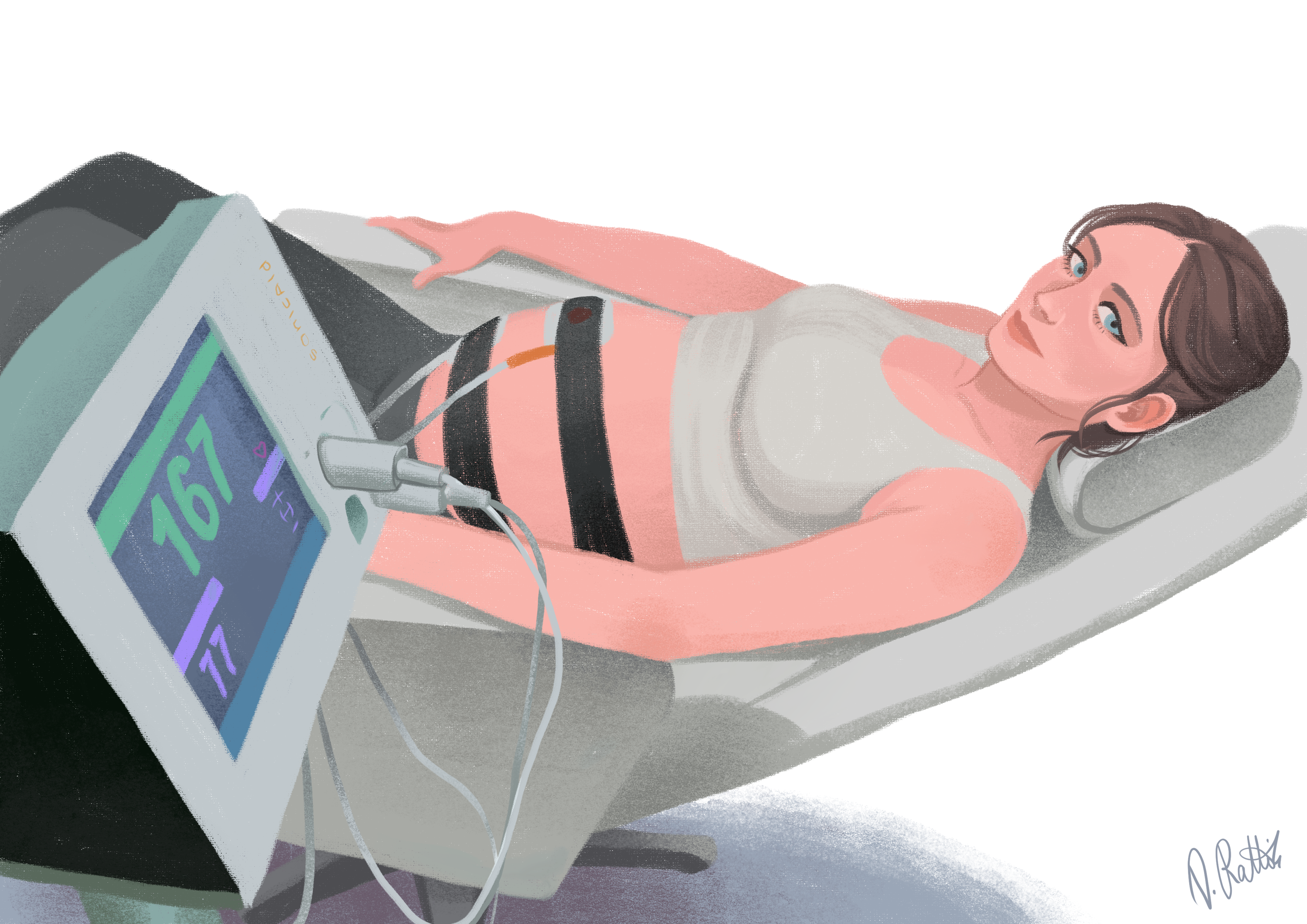At the Loote Ultrahelikeskus, it is possible to assess the well-being of the fetus and the presence of uterine contractions using a computerized cardiotocograph.

Computerized fetal cardiotocography (c-CTG) is a test that simultaneously measures the fetal heart rate, records uterine contractions, and tracks fetal movements. The Dawes-Redman analytical software, which is connected to the CTG device, enables a safe assessment of fetal well-being and the detection of uterine contractions starting from the 26th week of pregnancy.
Fetal computerized cardiotocography (c-CTG) is useful in the following situations:
When fetal growth retardation is diagnosed or suspected based on ultrasound findings.
If an ultrasound Doppler examination indicates potential issues with placental or fetal blood supply.
When there are changes in fetal movements, such as not feeling the baby at all or experiencing fewer or more movements than usual.
If fetal heartbeat abnormalities are detected during an ultrasound.
When fetal anemia is suspected based on ultrasound results.
If there is a suspicion of maternal-fetal transfusion syndrome indicated by ultrasound.
In cases of suspected premature onset of labor.
Twin pregnancy.
If there is suspicion of premature placental abruption, characterized by bloody discharge from the genital tract.
When there is suspicion of placental-fetal inflammation, such as chorioamnionitis.
When the pregnancy is past the due date.
In cases of gestational hypertension or preeclampsia.
Conducting the Examination:
Before the examination, we ask the woman to use the restroom and allow a minimum of 10 minutes for the examination, with additional time as needed.
The examination is performed by a midwife who asks the woman to lie down on a multifunctional leather reclining chair. She then attaches two digital sensors to the woman's abdomen using rubber bands. The Doppler ultrasound sensor records the fetal heartbeat, while the pressure sensor monitors uterine contractions. The woman can also register any fetal movements she feels by simply pressing a button. Additionally, the c-CTG system assesses the mother's well-being by measuring her pulse, blood pressure, and blood oxygenation (using pulse oximetry). After the examination, the Dawes-Redman software analyzes the CTG results and provides an assessment of the child's well-being and uterine contractions.
If any abnormalities are detected, the gynecologist may conduct a fetal ultrasound examination to evaluate fetal blood supply for a clearer diagnosis.
In the presence of uterine contractions, a transvaginal ultrasound examination can be performed after the c-CTG to assess the length of the cervix and confirm the onset of premature labor. The Actim Partus test may also be conducted on the cervical canal.
